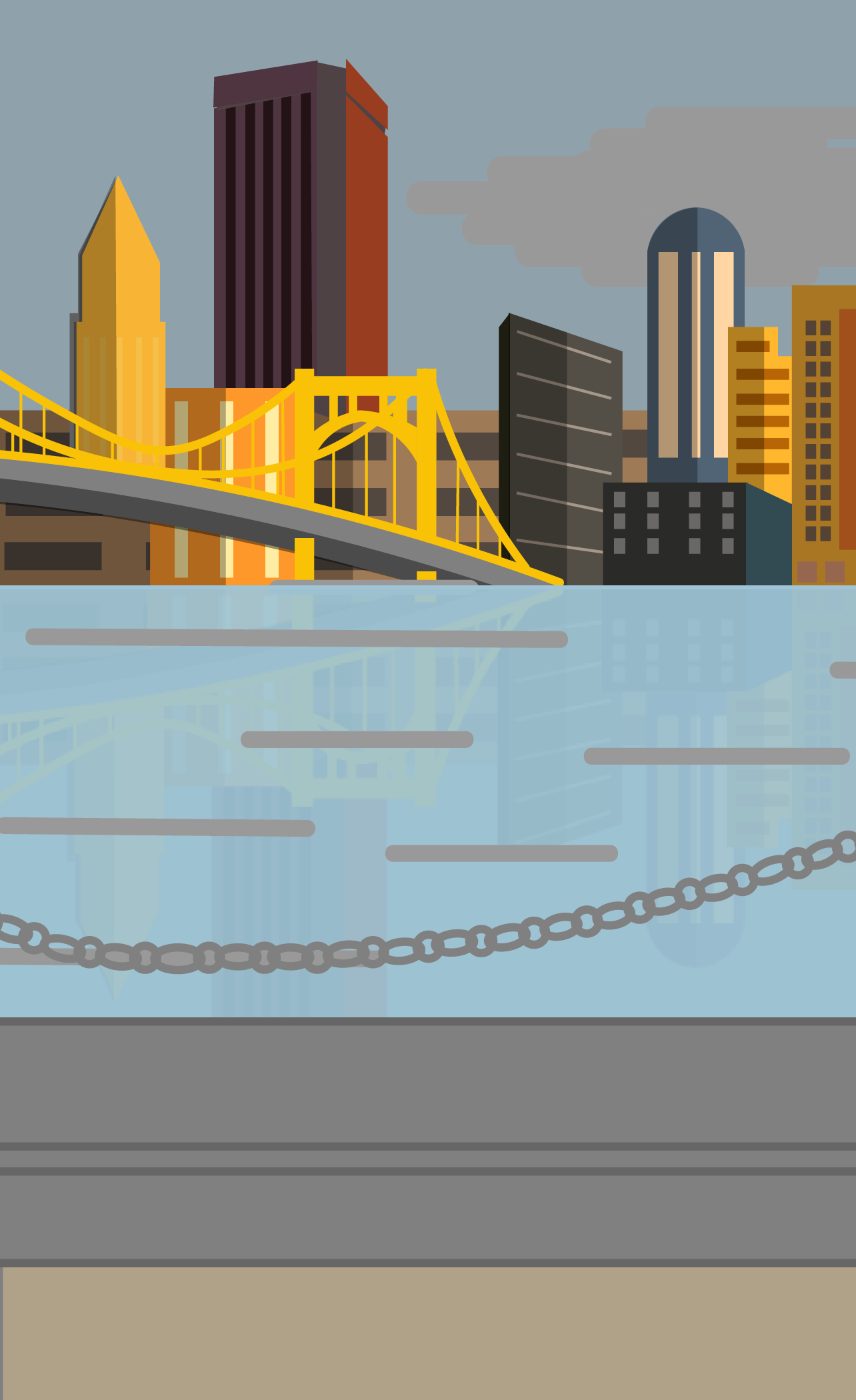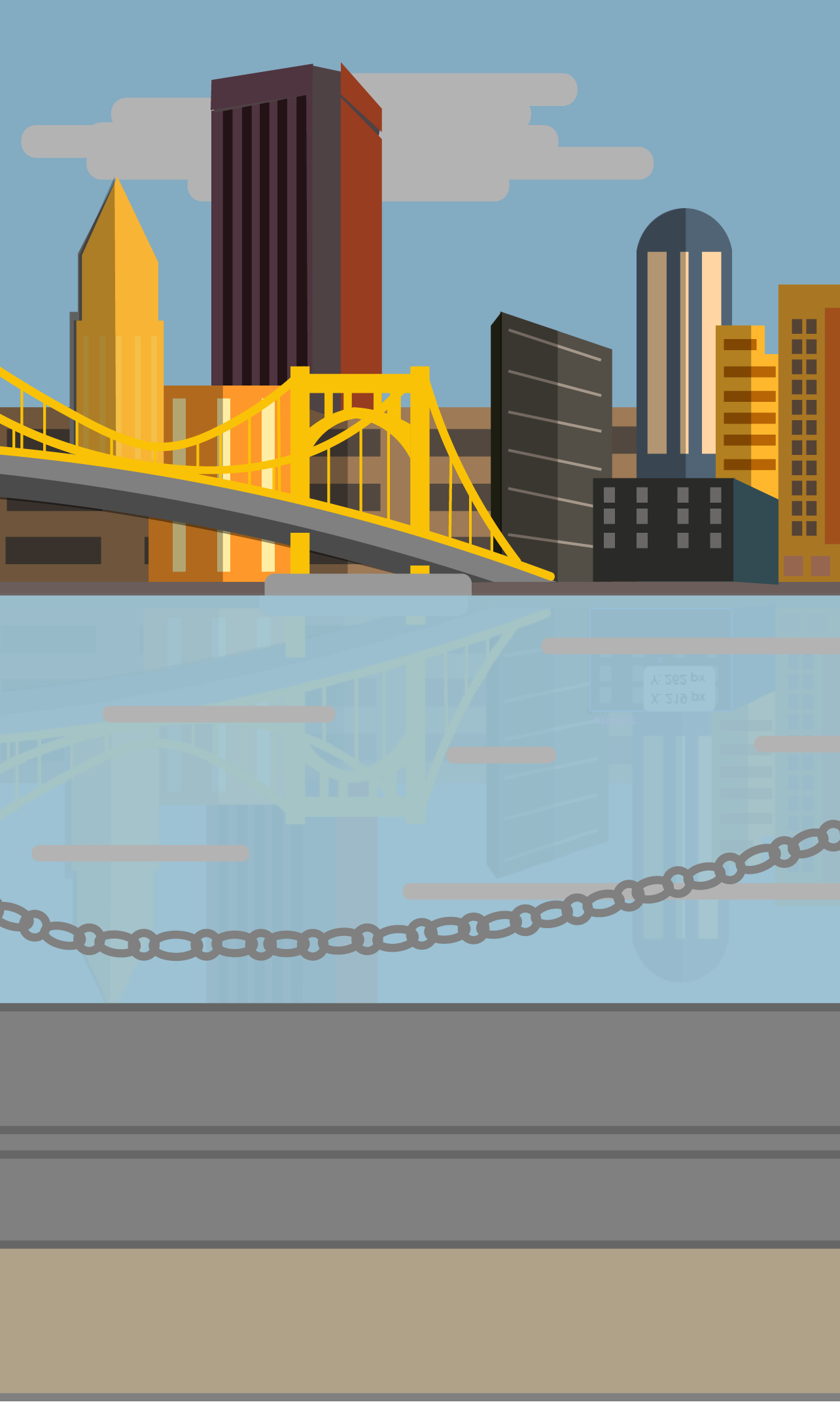Surfing for solutions: the tolls of Pittsburgh flooding





Pittsburgh residents are leaving their homes and lifestyles behind because of flooded basements, soaking wet carpets and molding drywall as a result of a record-breaking average annual total of 49.25 inches of rainfall in the City in 2018 — and the year isn't even over yet.
Allegheny County has experienced immense flooding the past few months — most notably in areas such as Millvale, the "Bathtub" section in Downtown, Bethel Park and South Hills. According to the National Weather Service, Pittsburgh's average September rainfall for the last 30 years is 3.11 inches. But by Sept. 10, the City's rainfall had already totaled 5.5 inches, surpassing the entire month's average.
Working on solutions to flooding is the Army Corps of Engineers — a federal agency that is one of the world's largest public engineering, design and construction management agencies. Jeff Hawk, the spokesperson for the Pittsburgh district at Army Corps of Engineers, said Pittsburgh's steep valleys have an impact on flooding when major rain events occur.
"We have a very flashy rain system here," Hawk said. "You can look out your window and see the steep hills of Pittsburgh and realize that when rain falls, [it] can quickly head downhill and into the valleys where most of the flooding occurs. So in these local communities and for people to have a little stream next to them, those are a big flood risk because things can happen very quickly."
The Corps currently has 16 flood management reservoirs throughout the highlands of the upper Ohio River Basin, an area commonly referred to as the "Three Rivers" that includes the Allegheny River, the Monongahela River and the Ohio River. Together, the rivers cover about 15,600 miles over 23 counties of Western Pennsylvania. Hawk said the reservoirs' primary purposes are to store water during rain events, to capture the runoff in the rain and to reduce the flood crest — the highest level of a flood wave — downstream to local dams.
"In [the] watersheds that are behind our dams, we can catch up to 33 percent of the precipitation and runoff that falls within the Upper Ohio River Basin," Hawk said. "You can almost think of these as buckets. They're up here in the highlands at the headwaters of the Mon, the Allegheny and the Beaver river systems. They are there to impound this water to keep it from flooding to downstream communities."
The flooding that has recently caused a lot of damage is mainly focused in these downstream communities. Hawk explained this may be due to "uncontrolled basins" in areas like Saw Mill Run and Millvale. The Corps has in place 42 local protection projects, which Hawk said are smaller projects for flood-risk communities.
"You can think of these as flood walls, channels, levies ... so these are smaller projects to evacuate water out of a community to reduce the risk of flooding to homes and businesses there," Hawk said.
The issue of climate change plays a role in this increased rainfall that results in excessive flooding, according to Daniel Bain, a professor of geology and environmental science at Pitt.
"Due to the warming atmosphere, the air is able to hold more water vapor, so when you do get a rainstorm there's more water vapor to rain out," Bain said. "You get higher volumes of rainfall, so that contributes to flooding."
Tom Maier, a senior biologist in the planning and environmental branch at the Corps, described the implications of more extreme climate conditions.
"I think there's general agreement that the climate change we've been experiencing has been moving the goalpost, moving the means and the extremes," Maier said. "We definitely have documented more extreme rainfall throughout the country, especially in the northeastern part of the U.S., which includes Pittsburgh."
Looking toward solutions to this problem for areas around Saw Mill Run, Maier said the Corps is implementing "green infrastructure" for local communities, which includes planting more trees and creating more ponds. According to Maier, the Corps has long been a proponent of implementing gray infrastructure, which uses concrete and steel, but it is now transitioning to more nonstructural means of preventing flooding damage.
"There have been proven benefits in converting places like old car lots by planting trees that break up the rainfall and reduce erosion, providing collection areas where water can pool where it's not gonna harm anybody," Maier said. "Green infrastructure covers a lot of different things. They can be ponds, they can be holding containers, they can be rain barrels."
Bain believes a long-term solution would be to warn builders who plan on installing property in flood-prone areas that those places could be at risk of flooding. He noted if this intense flooding continues to occur, the amount of property damage will increase, resulting in large-scale migration of housing from some of these areas to elsewhere. But there are also ways to slow the water down to reduce flooding and prevent this, he said.
"What often happens in urban areas, with pavement, the water doesn't soak into the soil and it runs off more quickly," Bain said. "You can do things like use pavements that are harder to infiltrate and that can slow the flood waters down to prevent flooding from smaller storms. But for the bigger storms, if we have to build everything for a 3- or 4-inch rainfall, that's gonna be a transformation from the way in which we build homes. It's not like anything we've seen before. It's gonna be a lot of money."
Speaking of money, Bain said the cleanup process for flooded homes can be very expensive because of the amount of material that can be damaged from high water levels, like Sheetrock, a popular brand of drywall.
"A lot of modern construction is done with Sheetrock, so it will absorb water, but it has to be ripped out or else it will get mold," Bain said. "You have to get it down to the bare wood, sand that down and make sure you don't get mold growing in there. It's just a colossal disposal of many different kinds of materials."
Michael Pisarcik, a real-estate lawyer who often deals with issues of flooding and flood insurance, said having flood insurance in these situations is essential. Without it, there aren't many options for people to receive financial aid for flood damage besides looking to charitable organizations and potentially receiving government assistance from the Federal Emergency Management Agency in the case of a serious natural disaster.
"As far as looking at recovery for individuals who are looking to sue somebody, there's not really a whole lot you can do because there may not be anybody to blame, per se, because it's a natural disaster," Pisarcik said. "That's why flood insurance is so critically important because a lot of the times, that's the only thing you can really rely on. Homeowners insurance and renters insurance typically do not cover flood damage."
Pisarcik said that if a homeowner's property is located in a flood zone, then a condition of the mortgage would require the person to have flood insurance.
Referencing the heavy flooding that affected businesses like the Outback Steakhouse in Upper St. Clair and the Mon Wharf parking lot near the southern edge of Downtown, the financial cost of the damage must be significant, according to Pisarcik — especially with cases of landslides this past year. This includes the collapse of a segment of Route 30 on April 7, which caused a landslide to occur behind Electric Avenue, destroying two apartment buildings and a house. The Pennsylvania Department of Transportation told the Pittsburgh Post-Gazette the cost of the collapse, including housing the displacement of residents, would cost $10 million to $12 million.
And even with flood insurance, residents are still paying for the effects of flooding by potentially giving up their beloved homes.
"With the landsliding that occured this year because of the wet conditions, the costs are several times the amount that the City of Pittsburgh had budgeted for a landslide like that," Pisarcik said. "Not only is there a monetary cost, but there's also people who are gonna have to leave grandma's home or the home they grew up in because the neighborhood is not gonna be the same. There's gonna be a lot of transformations in communities, too, that's gonna be hard to put a dollar value on."
